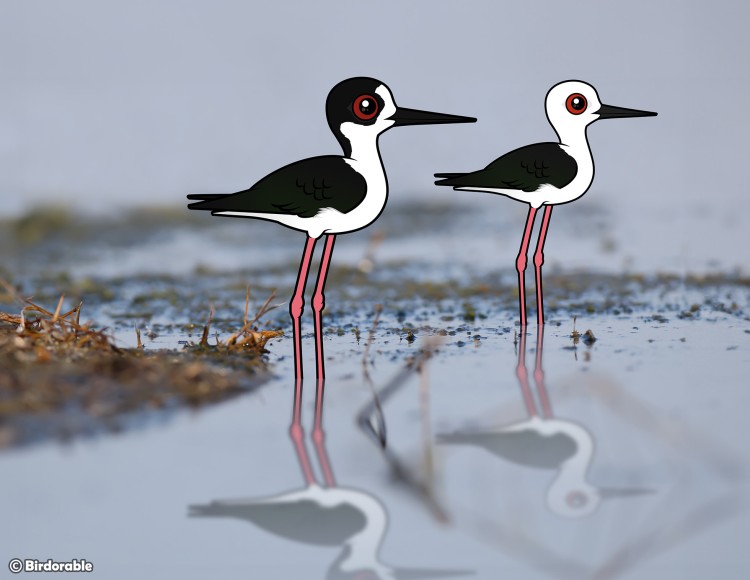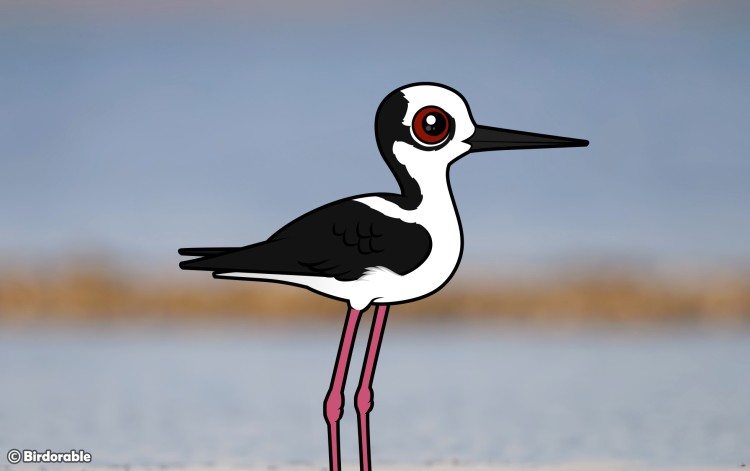Avocet & Stilt Week
Design Spotlight: Just Yapping Around
Meet the Black-necked Stilt: Nature’s Noisy Neighbor
At Birdorable, we love capturing the unique personalities of birds in our designs, and our latest creation, added recently and being highlighted as our Avocet & Stilt Week comes to a close, is no exception! The Black-necked Stilt is a bird that makes its presence known—often before you even see it. With its striking black-and-white plumage, long pink legs, and that unmistakable yapping call, this bird is a true standout in the marshes it calls home.

JUST YAPPING AROUND: The Inspiration Behind the Design
Our new design features a cartoon Black-necked Stilt standing tall in a shallow marsh, surrounded by cattails, with its beak wide open in mid-yap. The bold text JUST YAPPING AROUND perfectly captures the essence of this vocal bird. Black-necked Stilts are known for their sharp, repetitive calls that echo across wetlands, earning them the affectionate nickname "Marsh Poodle." If you’ve ever heard these birds, you know exactly why—they sound just like a yapping little dog!
The Marsh Poodle: More Than Just a Nickname
The Black-necked Stilt’s nickname, "Marsh Poodle," isn’t just a fun moniker—it’s a reflection of this bird’s role in its ecosystem. These stilts are highly territorial and are known to use their yapping calls to defend their nesting sites from intruders, whether they’re other birds, animals, or even humans. Their persistent calls serve as a reminder that these wetlands are their domain, and they’re not shy about letting everyone know it.
Why We Love the Black-necked Stilt
There’s so much to admire about the Black-necked Stilt beyond its vocal tendencies. These birds are graceful and agile, often seen wading through shallow waters on their long, slender legs in search of food. Their striking appearance and spirited behavior make them a favorite among birdwatchers and naturalists enthusiasts alike. At Birdorable, we wanted to celebrate all these qualities with a cute cartoon design that’s as lively and fun as the bird itself.

How to Enjoy Our Black-necked Stilt Design
Our "JUST YAPPING AROUND" design is available on a variety of products, from t-shirts to tote bags, so you can take a little bit of marshland charm with you wherever you go. Whether you’re a birder who’s familiar with the Black-necked Stilt’s calls or someone who just loves a fun, quirky design, this Birdorable creation is sure to be a hit. Check out our shop to see all the ways you can enjoy this unique bird!
Join the Conversation: Have You Heard the Marsh Poodle?
We’d love to hear from you! Have you ever encountered a Black-necked Stilt in the wild? Did its yapping call leave a lasting impression? Share your stories in the comments below, and let’s celebrate this remarkable bird together. And don’t forget to check out our other Birdorable designs featuring the fascinating and fun birds of the world.
Just Yapping Around Birdorable Gifts
Avocet & Stilt Week: That's a Wrap!
Thanks for joining us this week as we highlighted the leggy birds in the Recurvirostridae family -- the Avocets and Stilts of the world! We hope you enjoyed learning more about these snazzy waders and seeing our cute cartoon versions of them.









































